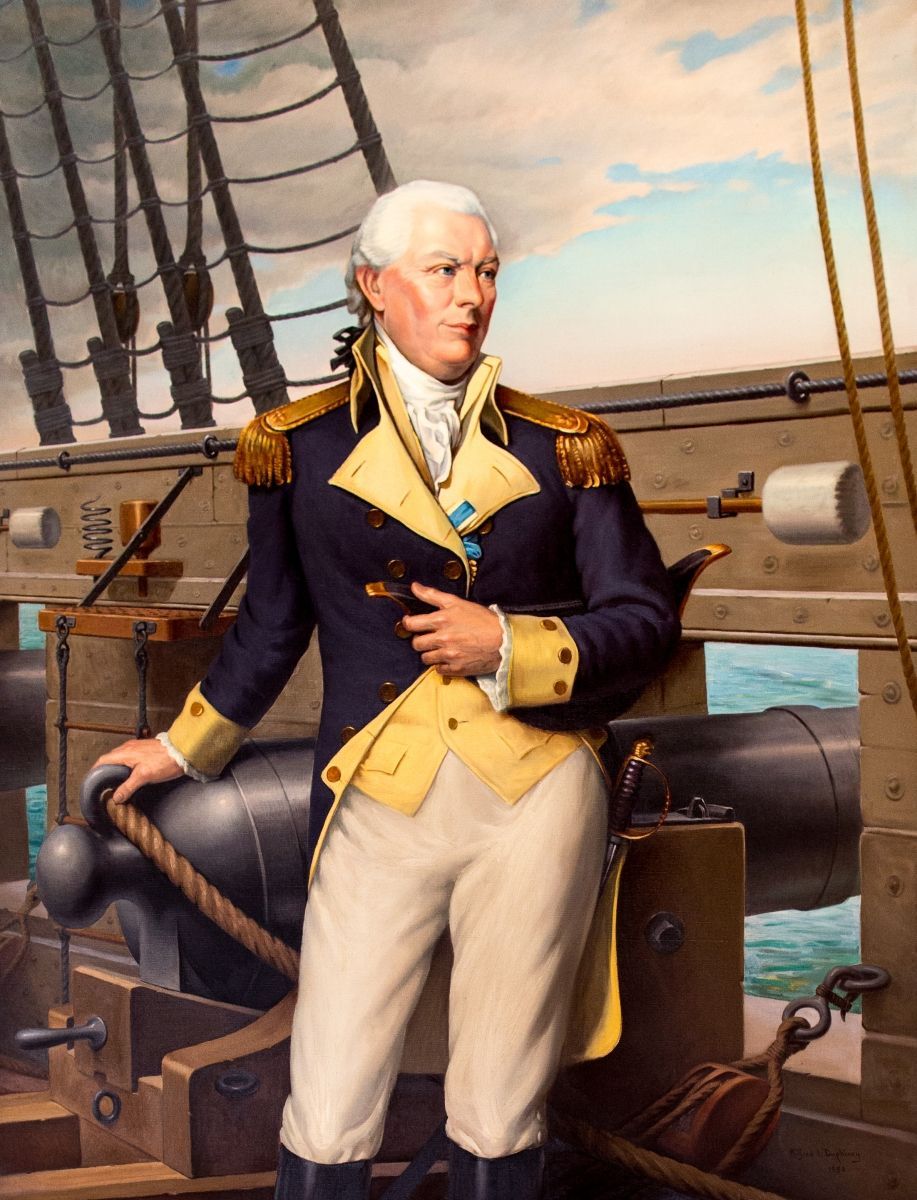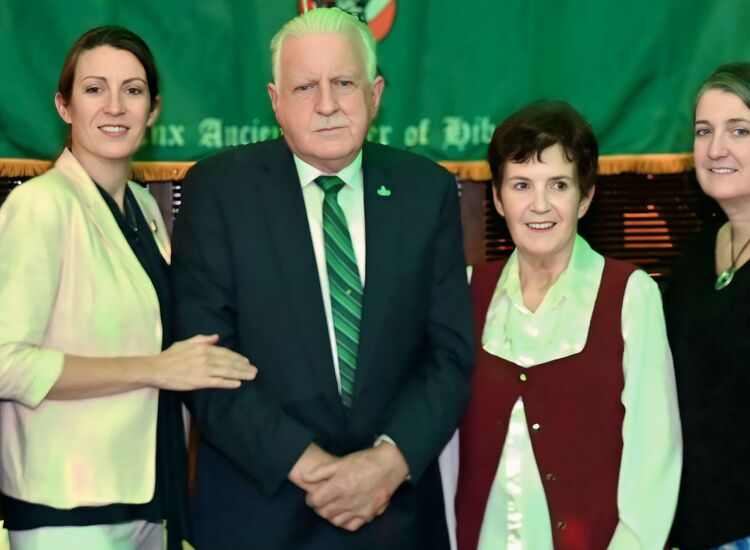Boston --- You could say that Commodore John Barry, Irish-born hero of the American Revolution, has been AWOL in Boston for nearly half a century.
A distinctive bronze plaque of Barry, unveiled with great fanfare on Boston Common in 1949, was last seen at Charlestown Navy Yard in September 1981, and then it disappeared.
Until now. I recently discovered the Barry plaque had been stored away in a government building in the Charlestown Navy Yard for 44 years and counting.
The Barry granite plaque on Boston Common.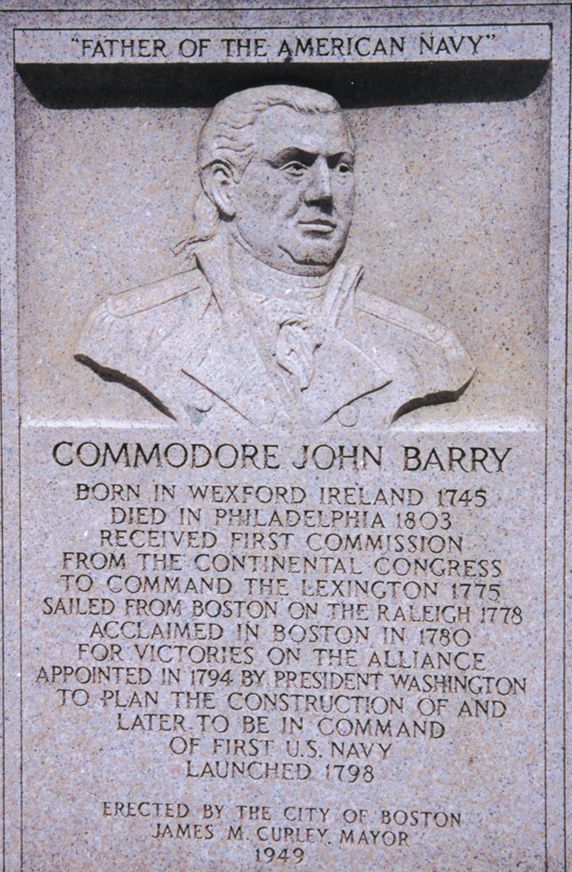
With the 250th anniversary of the U.S. Navy this week and America 250 celebrations in 2026, it is timely to reflect on Barry’s distinguished naval career and his place in our storied history.
Barry frequently sailed out of Boston Harbor as he battled the British Navy throughout the Revolutionary War.
The first ship under Barry’s command in 1776 was the Lexington, named after the famous battle the previous year. In December 1781, Barry safely transported Lafayette back to France aboard the Alliance, built in Amesbury, Massachusetts, where the Frenchman joined emissaries Ben Franklin, John Laurens, John Adams and John Jay to secure continued French support.
After the war, George Washington selected Barry to help create the U.S. Navy and made him America’s first commissioned naval officer. The U.S. Navy has named four naval ships in Barry’s honor, and just last week, the Battleship New Jersey in Philadelphia hailed Barry as part of the Navy's 250th celebration.
Here in Massachusetts, Barry’s popularity is pervasive.
Building 107 in the Navy Yard.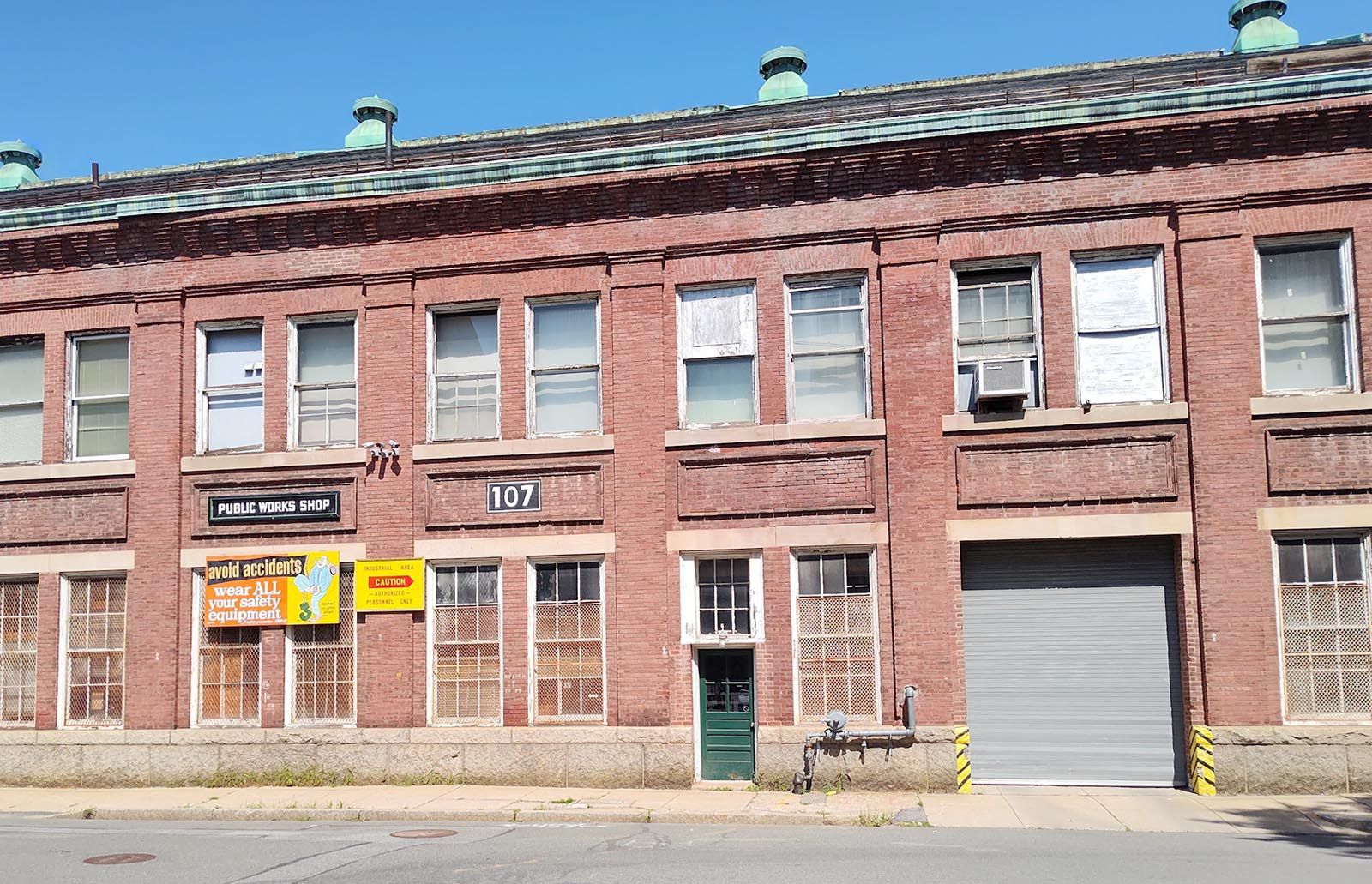
In May 1934, the state legislature officially named September 13 as Commodore John Barry Day, and numerous governor proclamations have been issued over the decades.
Barry was a personal favorite of native son John F. Kennedy, with both men sharing Wexford roots and distinguished naval service. President Kennedy hung a portrait of Barry by colonial artist Gilbert Stuart in the White House and displayed Barry’s cutlass and flag in the Oval Office.
The JFK Library in Dorchester retains the cutlass and flag in its collection. Nationally, multiple Irish groups consider Barry the Father of the American Navy and have been steadfast champions, placing Barry statues, plaques and markers in Annapolis, Washington, D.C., Philadelphia, Providence, Brooklyn and Staten Island.
Now for the history of the Barry Plaque, On Sunday, October 16, 1949, Boston’s Mayor James Michael Curley presided over the unveiling of the Commodore John Barry plaque along Tremont Street on Boston Common.
Curley was joined by U.S. Navy and Irish Consulate officials, local politicians and Irish-Americans.
The four foot bronze plaque, embedded in an eight foot stone, was created by sculptor John Parimino, whose bronze plaque of Frenchman Marquis de Lafayette stood nearby. The Barry unveiling was possibly the last official event by Curley, whose 50 year political career was coming to an end.
That November, he lost his mayoral bid to John Hynes and retired from public life.
The Barry bronzed plaque in storage at the Navy Yard.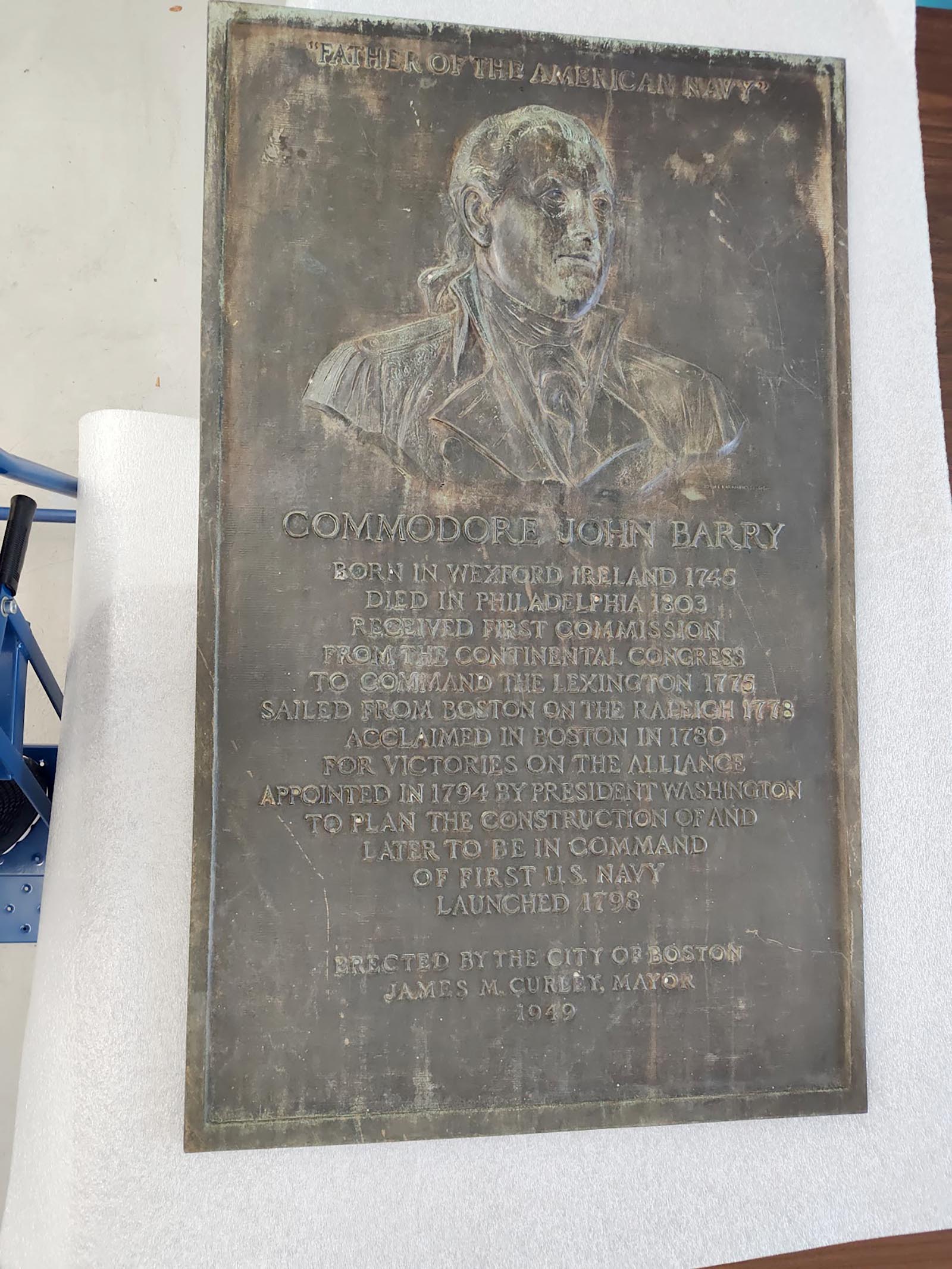
Fast forward 26 years, and Barry’s plaque suddenly appeared in the news on April 6, 1975. The bronze had been stolen in the dead of night, and only the stone remained.
Boston police speculated that thieves were stealing historical items for resale leading up to the bicentennial and likely used heavy bolt cutters to pry the bronze loose from the stone.
City officials rushed to replace the stolen plaque and in 1976 the Henderson Foundation funded a facsimile granite plaque to replace the bronze. It remains on Boston Common today. In February 1980, the Barry plaque saga took another turn when the contrite thieves dropped the bronze Barry off at the AOH Hall in Watertown, along with three other pieces of stolen art.
Watertown detective Richard O’Connell said the thieves had offered to turn in the Barry plaque if they were not prosecuted. Barry’s plaque ended up in South Boston, where officials stored it for safe-keeping at James M. Curley L Street Bathhouse, a community center Curley had opened as mayor in 1931.
On September 12, 1981, the plaque was “transferred from the Boston Art Commission to the National Park Service for permanent display at the Navy Yard, under the sponsorship of the Massachusetts AOH,” according to an Irish Echo story.
Boston City Councilor Ray Flynn, who would become the city’s mayor three years later, was keynote speaker at the Navy Yard ceremony, along with AOH National President Jack Connolly and officials from the U.S. Navy, National Park Service (NPS), City of Boston and American Legion.
On May 22, 1982, NPS Curator Peter Steele told The Boston Globe about plans to display Barry’s plaque at the Officer’s Club in the Navy Yard, but the plan never materialized. That was possibly the last time the plaque was mentioned in the press, until now.
Being curious about the Barry plaque for some years, I have been scouring newspaper archives at Boston Public Library and gaining insights from Hibernians Richard Thompson and Bill Sullivan.
Through my tourism colleague Namita Raina, I was able to confirm conclusively that Barry’s plaque had indeed been holed up in Charlestown Navy Yard since 1981.
On July 26, 2024, I visited Building 107, a rectangular red brick building on Third Avenue in the Navy Yard, joined by NPS Superintendent Michael Creasey and Museum Curator David Vecchioli, who have both since retired, and Boston City Councilor Ed Flynn.
There lay the Barry bronze, dusty, scratched and tarnished by time and sulfate corrosion, basking in sunlight - perhaps for the first time in decades.
Since seeing the plaque, we have been working closely with the Boston Art Commission and Boston National Historical Park for approval to refurbish the Barry plaque and place it in a visitor-friendly spot in the Navy Yard as a lead-up to America 250 festivities in 2026.
We are gathering support from Irish groups, historical societies and public officials, with hopes that the restored plaque in the Navy Yard will strengthen Boston’s longstanding homage to Barry as one of the most valiant figures of the American Revolution.
For more information on the project, or to support this effort, please visit irishboston.org/2025/john-barry/ or write to irishmass achusetts@comcast.net.

